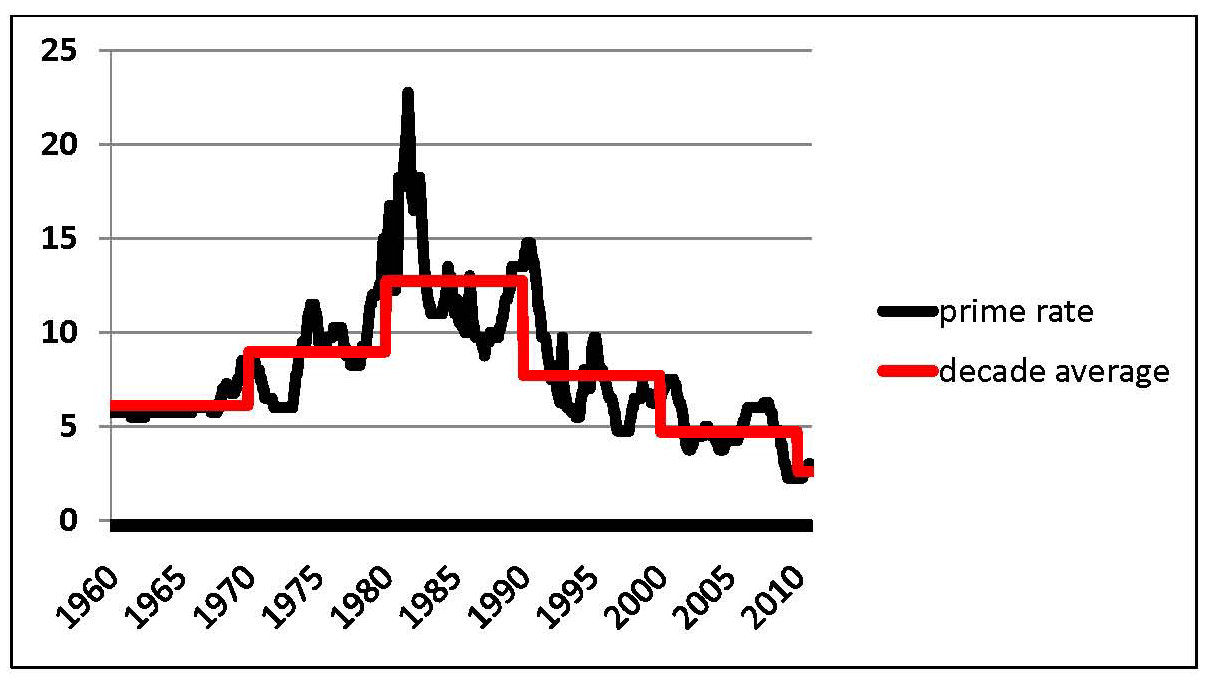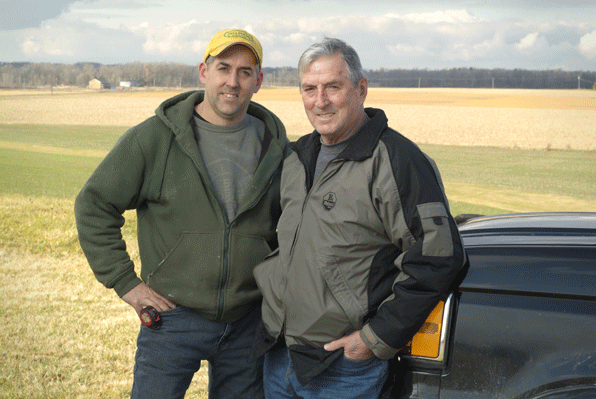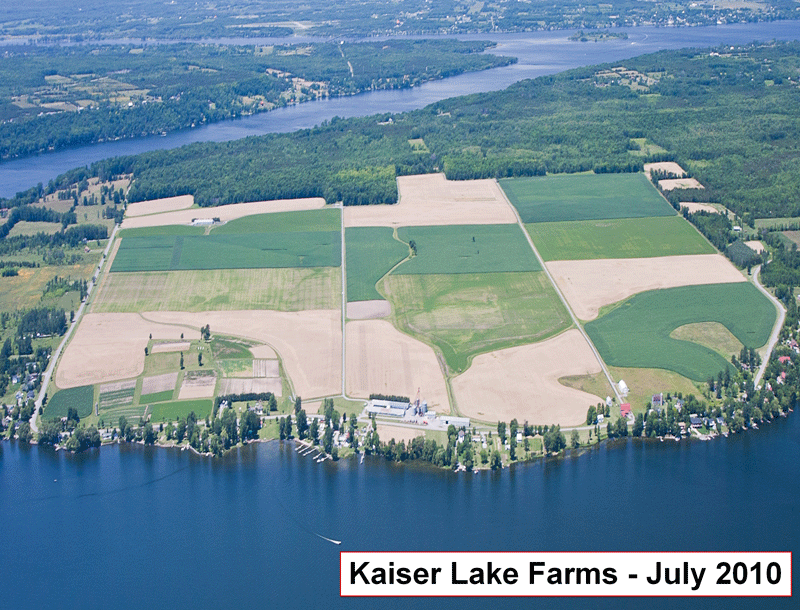Lessons from harder times
A REMINDER THAT LAND VALUES CAN CHANGE
age teaches widsom, at least to those willing to learn. With the current high price of land, now might be a good time for younger farmers to turn to their elder peers for lessons on what the hard times can teach.
Those who were there can tell you that farming in the ’70s was nearly euphoric for many. In several parts of Ontario, new corn hybrids had only recently made cash cropping a viable means of farming. Folks were getting comfortable with atrazine, which had just ‘miraculously’ appeared in the previous decade, and were about to discover Roundup®. Commodity prices were reaching historical highs, land values shot up, and interest rates were low. People came from around the world to farm here. Growth and expansion seemed to be happening everywhere, with no signs of stopping. Times were very good for a lot of farmers.
history repeating itself?
Richard Blyleven was a young hog farmer in Haldimand County at the time, and the industry today really reminds him of what it was like back then. “The talk was kind of the same as it is now; you had to feed the world and there was going to be a [food] shortage,” recalls Blyleven. “The ’70s were great, and then all of a sudden, the ’80s just turned everything around.”
Blyleven was one of many farmers who had their bank loans called during the ’80s. He had about 220 acres in the spring of 1985 when the bank manager called him to her office for the first time ever. Since he’d always managed his money well, and had never missed a loan payment, he hadn’t thought much of the fact that his land was almost half the value it had been in 1980. Of course, he was well aware that interest rates had shot through the roof on his loans.
“Back in 1981, the banks would always send you a letter when the interest rate changed on your loan,” he says. “Well, every week you got a letter, because the rate would go up 0.25 to 1.00% every week. That’s how fast [interest rates] went; it just went cuckoo overnight!”
He immediately called his accountant, but all he could say was that Blyleven was the third client from that bank to call him in the same predicament.
FIGURE 1: ontario farmland values (real $/acre), 1961-2009. source:?statistics canada. 2010. value of farm capital. catalogue number 21-013-x.

FIGURE 2: monthly prime interest rate and decade average, 1960-2010. source: statistics canada. chartered bank – prime business rate. cansim series v122495. table 1760043.

value lost
While Blyleven was putting up for sale signs on his farm, Dr. Alfons Weersink, now a professor at the University of Guelph, was working as an Ag Credit Manager at the Bank of Montreal. “All that we were doing was basically foreclosing and not lending any new money at all,” Weersink says. “In the ’70s, farmers were borrowing a lot of money, so in the early ’80s when interest rates went way up, people weren’t buying land and the prices came down.”
Two years ago, Weersink recalled those memories as part of a brief examination of the influences on farmland values. The farm financial crisis of the ’80s provided the only exception in an upwards trend of historical farmland values, even after adjusting for inflation. The brief also shows both current land rents and interest rates are supporting a continuum of higher land prices.
“The price of land is really determined by what you can get from it and then how much you’re going to have to pay in terms of an interest expense,” says Weersink, “and we’re in a time where the two major components of land values are at extreme levels.”

Weersink thinks that the historical perspective is useful as a cautionary tale but does not necessarily doom farmers for a repeat of the ’80s in the near future. Lending institutions are far more careful and won’t bankroll on equity alone like they used to. Land purchases have to have cash flow. He also points out that rental acreage has steadily increased since the ’70s. As much as 45% of farmland is rented today, which defers debt management risks to non-farm owners. An additional point worth noting is that when interest rates are 10%, there are better odds that rates could still come down than when rates are at 5% and there are more incentives to borrow lots of money at a variable rate.
with interest
Human nature prevented a lot of people from locking in before interest rates got really bad and that’s how so many ended up on wild rides – with interest rates as high as 24% says Jack Kyle. Kyle works for the Ontario Ministry of Agriculture and Food now, but in the ’80s, he was selling crop inputs. He says it was a tough time for small ag businesses, with all of those clients there one day and gone the next. There were times when people found themselves on the right side of the fence, such as those who could afford to buy the farms or businesses that went bankrupt or even let money just sit in a bank account. But in terms of sheer volume, many people in the industry were pushed out. He can see where young people asking about the financial aspect of the crisis might gain some insights, but the really dark side, the emotional aspect, is important to communicate too.
“People were just in desperate straits. The family home is part of the farm, and because agriculture has put a huge emphasis on that family history and we take great pride in it, it’s a real kick in the teeth when you lose it,” laments Kyle. “Not only were farmers losing a business, they were losing a family tradition.”
The whole culture of farming was different then says Kyle, particularly financial management attitudes. It was long before farmers ever had computers or accounting software he points out. Few people used or understood ratios at that time and financial management was basically just revenue minus expenses. Eric Kaiser, a farmer in Lennox and Addington County, partly credits his own wife’s bookkeeping savvy and the implementation of supply management for his farm’s survival. His philosophy was always to grow grain for his chickens, feed the livestock, use the manure, and earn his living from whatever the chickens brought in. But Kaiser says it didn’t matter how many chickens you had, 20% interest in the ’80s hurt.
“Grain farmers, any who didn’t farm in the ’80s, don’t know what it’s like to lose equity every year,” said Kaiser. “You were farming on last year’s money and you were depleting it, because the grain prices were so terrible and the interest rates were so high.”
Despite his best management techniques, it might have been the end of Kaiser’s farm in 1988 when the layer barn burned, but for some reason the banker looked the other way. To this day, Kaiser isn’t sure exactly why but it might have been sheer persistence. Both Kaiser and Blyleven, talk about working hard until they solved their farm problems in hard times. Sometimes it required a little creativity. As a result, even now they remain vigilant in adopting new ideas, saying change is the one thing a farmer can always count on. That, and history repeating itself.
PHOTO: KAISER LAKE FARMS

“On clay soils, you often can’t do tomorrow what you did not do today because conditions may change. Timing is paramount,” said Kaiser. “I’m stilling learning and I just keep looking to see if there’s some way I can do it better.” •






















